- Like
- Digg
- Tumblr
- VKontakte
- Buffer
- Love This
- Odnoklassniki
- Meneame
- Blogger
- Amazon
- Yahoo Mail
- Gmail
- AOL
- Newsvine
- HackerNews
- Evernote
- MySpace
- Mail.ru
- Viadeo
- Line
- Comments
- SMS
- Viber
- Telegram
- Subscribe
- Skype
- Facebook Messenger
- Kakao
- LiveJournal
- Yammer
- Edgar
- Fintel
- Mix
- Instapaper
- Copy Link


Chances are, if you are homeschooling more than one child, your children are at different ages and grade levels. Right now, the grades of our children range from kindergarten up to sixth grade. Obviously, there is a wide range of learning and comprehension that goes along with the ages of our children.
Which brings us to another question I get asked frequently…
How do I teach more than one child?
Does it require a little more work because of the age levels? Yes. Is it possible to teach a range of ages? Absolutely! Will you be able to spend adequate time with each child? Again, yes.
We’re gearing up for our eighth year of homeschooling and while we are tweaking and adjusting our schedule each year, there are few key things that make the process of homeschooling multiple ages and children easier.
Have a Plan in Place
Before you start your school year, it is important to know what subjects and concepts need to be covered during the year for each child. I recently shared some tips on how to plan your homeschool day and believe that being organized in this area first helps tremendously. When you know what needs to be accomplished and have a rough routine outlined before you start your school year, it helps ensure that you aren’t forgetting something.
Don’t be afraid to deviate from the routine and reevaluate during the year either. You may need to put something aside for a bit or add something in – and that’s ok!
Combine Subjects When Possible
One of the core things that has helped our family is working together on multiple subjects. While we don’t do this for every subject in our school day, there are several subjects that we work on together as a family. Our mornings begin with us working together on Bible, history, read-alouds, and calendar time.
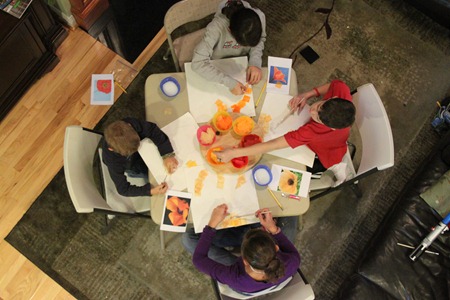
Much of this will depend on the ages of your children, but you can always adapt a subject and make it easier or more difficult for other children by incorporating extra assignments. We use the same history text for the entire family, but extend the learning with the older children using books that they can read independently or having the work on short papers based on the topic, etc.
When we did a bird unit for science, our oldest had additional assignment that included choosing a bird that was native to our area and writing an in-depth report on that one bird and working on an art assignment to go along with it. Essentially you can make a subject easier for younger children or more intense for older children and target it toward their age/grade.
Work Around Nap and Feeding Schedules
Admittedly, one of the hardest times for me as a mom was juggling school with all the naps and feeding times of little ones. It took a bit to work into a routine of doing school during some of those coveted nap times and taking advantage of the quiet time to focus on what needed to be done. Life at home was definitely more hectic, and there may have been a few ‘me’ things that needed to be put aside for a season, but working around our family’s natural routine was a big help.
Feeding times became times that we would sit on the couch reading together {don’t think I didn’t nod off more than once!}. During that stage of our life, quite a bit of our curriculum was literature based and we completed the hands on projects while the little ones napped {or were otherwise occupied}.
Let Older Children Work with Younger Siblings
There are points in our day where one of the older kids has a bit of a lull or can take a moment to help out a younger sibling – maybe reading a short book aloud or listening patiently to a story. The past few years our oldest two have had fun pulling out a puzzle to work with their little brother, playing a game on the iPad with him, or helping another sibling in answering a math question when I was busy with another child.
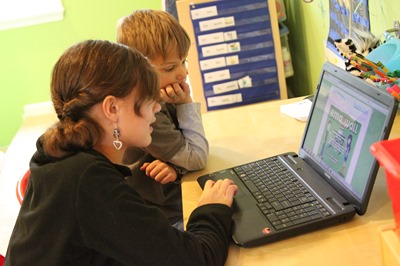
Help Your Children Learn to Work Independently
There are several subjects that our children eventually begin to work on independently and over the years we have used the weekly workbox grid to help our children visualize what subjects will be covered each day. Subjects that they are able to work on independently are easy to see – and focus on.
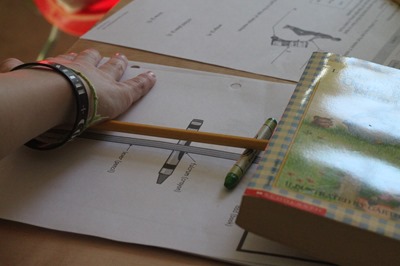
Our older three work on their math curriculum independently {Teaching Textbooks}, handwriting, independent reading and book reports, vocabulary, Spanish, typing, etc… There may be times that they need some quick assistance from me, but once they ask a question, they move on and continue their work. If they get to a subject that they need my full attention {and I am not able to give it at that point}, they know to move on to another subject area until I can help. See our full curriculum list here.
At the start of our school year I organize each child’s paperwork by week and subject so that I can easily slide their weekly papers into folders for them to grab and use. Books they need are located in a convenient spot, making it easier for each one to work on their own for specific subjects. You can get a peek at our classroom here.
Meet with Each of Your Children Daily
Each day I have focused 1:1 time with each child to cover subjects and give instruction in areas they cannot work independently. After we work on our group subjects, each child heads to his/her own area to begin independent work. Typically, the subjects they can work on independently increase as the children get older, so I begin working with our youngest child on subjects first.
To give you an idea of what this looks like, Zachary might be working on handwriting, math, or a hands-on game while I am helping Kaleb with math, science, or reading. As soon as Kaleb and I are done, I move over to Zachary’s area to help him with subjects such as writing, spelling, and reading.
Our joke is that I ‘work my way up the food chain’, meaning I start with the younger kids and work my way up to the oldest. When our younger ones are finished, they can work/play quietly with the many manipulatives we have in the room or pull out toys in their room and play there {usually the younger ones are finished first}. There are times when a few children have to come back a bit later in the day to work on another subject 1:1 with me depending on how much time we had in the morning, but they enjoy a break for a bit after their initial bit of 1:1 time with me is done.
Consider Using Curriculum That Doesn’t Require a Lot of Prep
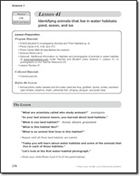 There are many subject areas that I can spend a lot of time planning and prepping, but sometimes my sanity stays a bit more intact when I do not have to come up with detailed lesson plans, scour the internet for craft ideas and experiments, and invent worksheets to go along with a subject.
There are many subject areas that I can spend a lot of time planning and prepping, but sometimes my sanity stays a bit more intact when I do not have to come up with detailed lesson plans, scour the internet for craft ideas and experiments, and invent worksheets to go along with a subject.
Over the years there have been several pieces of curriculum that our family has started to use, and one of the key components is ease of use. Having lesson plans laid out with all of the materials ready to go can be a huge time saver for me {and our kids}. Our spelling program and science curriculum are two areas that have benefitted greatly from this. All of our supplies and books are in a box and I simply have to open up the book and begin teaching the next lesson {phew}.
There are still areas that I like to pull things together on my own, but it is not a weakness to use a program that has already put things together for you. Yes, the programs may be a little more of an investment on the front end, but typically the time and stress you save are worth the extra – and you can most likely resell and/or reuse it with another child.
Keep Little Ones Busy
When your younger ones are awake more often, they may want to be included in your school time. They may not be able to participate to quite the level of the older ones though.
While we were in the thick of toddlers and preschoolers, I pulled out special toys each day for the younger ones to play with and rotated through them so they were ‘fresh’ and fun – not just the same old toys. During the summer months I worked on ‘busy bags’ that had simple activities for toddlers and were fun to swap with other families. Keep it simple and uncomplicated.
Avoid Interruptions
Let’s face it – we get distracted {I’m not the only one, right?}. Over the years I’ve had discover and learn my limits during our school time. With caller ID is easy to not answer the phone when my mom calls {don’t get me wrong…I love my mom, but she can ramble and seems to forget that we’re doing school}.
Limit things that you know are time stealers for you and will distract you from what you should be doing. My laptop typically does not come into the classroom with me because it is too easy for me to hop off on a bunny trail with email…or Facebook…or start this ‘one little idea’ for a printable. Our iPad has helped quite a bit – we can watch videos on YouTube or use educational apps, but it is much harder for me to get sidetracked {just keeping it real here!}.
Stay Organized
Our house is far from perfect and there are piles that grow from time to time, but I do try to keep things organized in a way that makes sense to me. For me that means having a homeschool binder to keep my mommy brain on track.
Another thing that has helped me over the years is color coding our kids {each child has a different color that is theirs}. I am able to quickly pull any papers needed from the shelves from their folders or identify what belongs to which kiddo {we even go as far as putting color dots on their markers so there is no arguing about clean up!}. Our Weekly Workbox System is also color coded and the visual schedule helps the kids and I stay on track each day.
The same organizational system won’t work for everyone {and that’s ok}, but find one that works for you and stick with it.
Enjoy the Time You Have Together!
Each year has brought different challenges and changes to our day, but as our children have gotten older, balancing the teaching has also become easier. Part of that may be due to our past experience, but as our children grow and mature they are also able to work more independently {most days} and have developed patience to wait their turns {again…most days!}.
For you moms with little ones, those early years can be rough and there are days that seem so very overwhelming. Hang in there.
Trust me – it will get better. You CAN do it and homeschool multiple children together. Give yourself and your kids some grace. It won’t likely happen overnight – all good things take time, but your family will find a groove that works.
Most importantly, this time you have together is a blessing – be sure to take the time to enjoy each other. There will always be one more thing that you ‘could’ do, just make sure that you are focusing on the things that are most important – each other.
What has helped you in teaching multiples ages and stages? Is there a tip that you would give a family new to homeschooling? Share it in the comments!
This post is a part of the Homeschool Basics series. Be sure to read the other posts if you are just joining in. For the record, I am not an expert. I’m a homeschool mom who is sharing what she’s learned so far along the way with her own family.





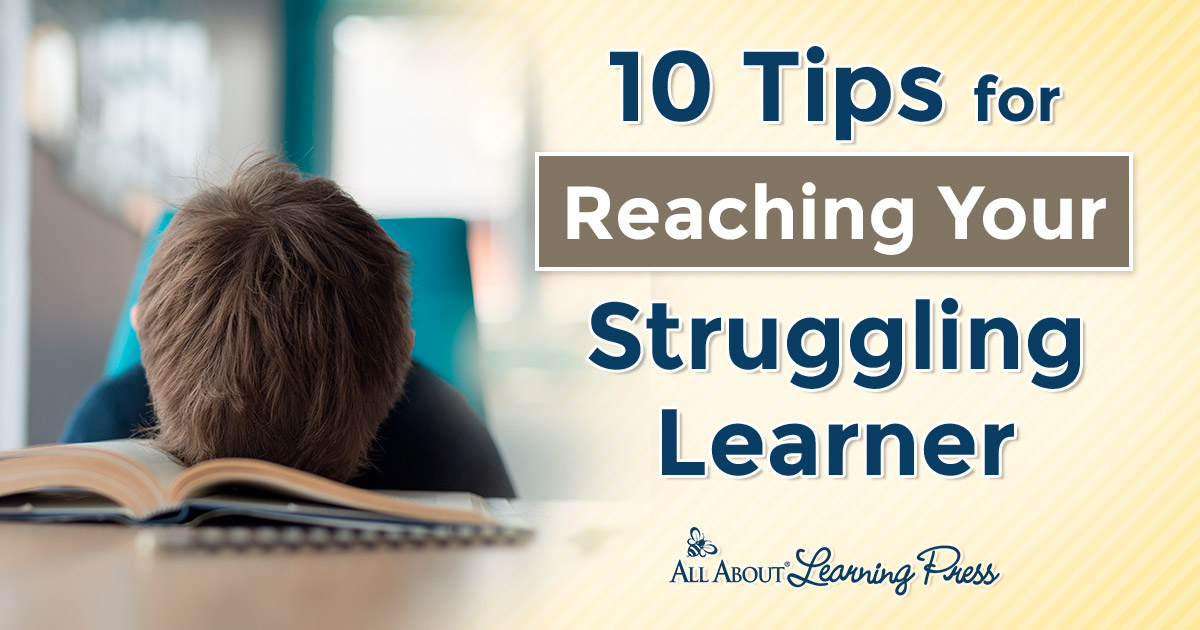




 The printables shared on this site are FREE of charge unless otherwise noted, and you are welcome to download them for your personal and/or classroom use only. However, free or purchased printables are NOT to be reproduced, hosted, sold, shared, or stored on any other website or electronic retrieval system (such as Scribd or Google docs). My printables are copyright protected and I appreciate your help in keeping them that way.
If you download and use some of my printables and then blog about them, please provide a link back to my blog and let me know - I'd love to see how you are using them! Please be sure to link to the blog post or web page and not directly to the file itself. Thank you!
The printables shared on this site are FREE of charge unless otherwise noted, and you are welcome to download them for your personal and/or classroom use only. However, free or purchased printables are NOT to be reproduced, hosted, sold, shared, or stored on any other website or electronic retrieval system (such as Scribd or Google docs). My printables are copyright protected and I appreciate your help in keeping them that way.
If you download and use some of my printables and then blog about them, please provide a link back to my blog and let me know - I'd love to see how you are using them! Please be sure to link to the blog post or web page and not directly to the file itself. Thank you!
I have an almost 4 year old, a 2 1/2 year old and a baby that is due (oh goodness, now please!) so while I don’t need this NOW, I have pinned for future. We start preschool “officially” in the fall for my oldest and then, each year after that we will be implementing these “tricks”! I have so much fun researching in the mean time :)
I SO wish I would have had pinterest all those years ago!! :)
Great post, Jolanthe! We’re in year 9 and I have big age gaps between kids too. The one-on-one sibling help you mentioned has been the best idea we’ve applied here too to keep things running smoothly. We are a loud and boisterous family, so having a big brother take the smaller one to the park or to another room to work one on one for reading while I help my daughter with math makes it all go more smoothly.
-Erin@TheUsualMayhem
I LOVE that our kids enjoy working together {most of the time – grins!}
This was so helpful to me today. I will have a 3rd grader, kindergartener, a two year old and my preschool age nephew this fall. I am feeling a bit overwhelmed in how to make it all work. Thanks for some great tips.
Hang in there!! Those younger years are definitely harder. :)
I do remember reading that many Montessori classrooms have a few ages at one time and it works out really well as the older ones help the younger ones.
I don’t cease to be amazed at the amount of work you homeschool moms have to do. Its a job preparing curriculum for one age but, a few at a time seems so overwhelming.
Definitely 8 years worth of learning that you have done. So excited that you shared this post. While I only have one at home now to teach, I think I am still going to implement some of these ideas. They are great!
thanks, Jennifer! :)
We’re starting our homeschool journey this summer with a 2nd grader, kindergartener, 2 year old and newborn. While my 2nd grader is uber excited about it, I must admit it’s a bit daunting. Thanks for the encouragement and the tips!
You have this down to a science!
Loved this post! Thank you!! What types of games/manipulatives do you use to keep your younger ones busy? I can’t seem to find anything for my soon to be second grader. Most of what I see is for younger kids or something she needs help playing.
Mandy –
I think to answer that, I should work on a separate post!! I’ll start jotting down ideas and work on that!!
*Love* this idea. My boys are very visual and like to see and show me when they’ve accomplished things. This is a great idea. Thank you for sharing Jolanthe.
most welcome!! :)
Thanks for this post! We just finished our first year of homeschooling, and right now I don’t really have much desire to do it again next year. Everyone seems to tell me that things will only get harder. Do you really think they get easier as they grow?
I do – there are always different challenges each year {kids grow up and needs change, etc…}, but you will better understand how you and your kids work together too. :) That’s not to say that we don’t have frustrating times {we are far from perfect}, but it WILL be better. :)
Very helpful, real, and relavent post! So well written, and so very appreciated. I am homeschooling this year with 6 under 13, the main challenges being our baby twins and just having moved. Talk about nuts and trenches. I know we are on the right track, and life will improve. It’s been a pretty breathless journey and I sure appreciate what you shared. I feel like there are treasured times in the trenches, despite the challenges and shortcomings. Oh and yes, I get lost on researching ideas too so no you’re not the only one! Thanks so much for the inspiration and guidance.